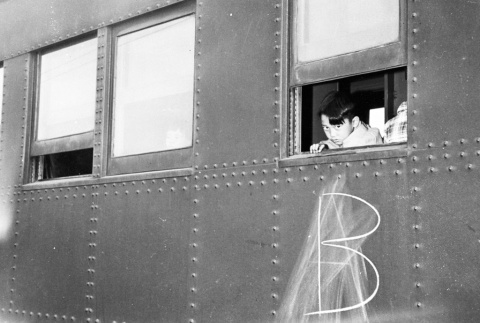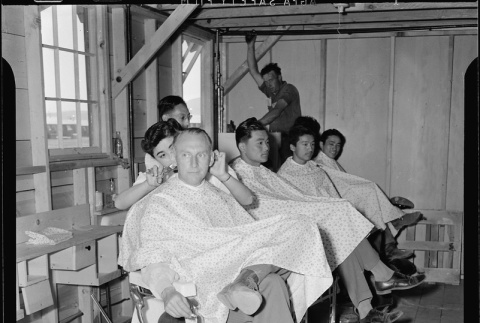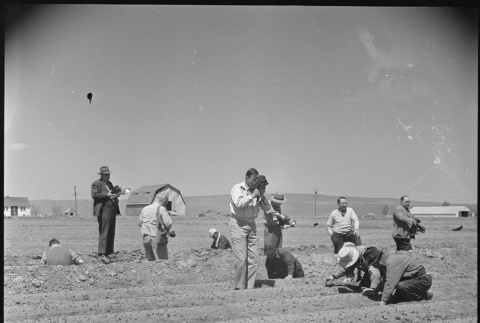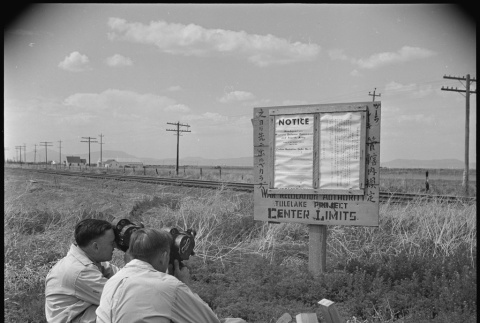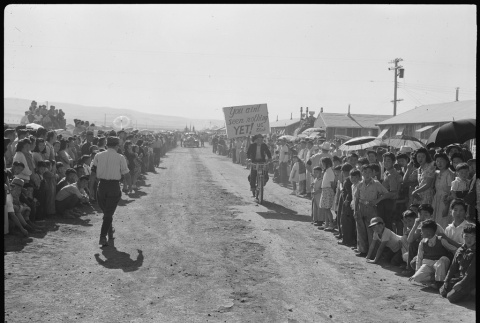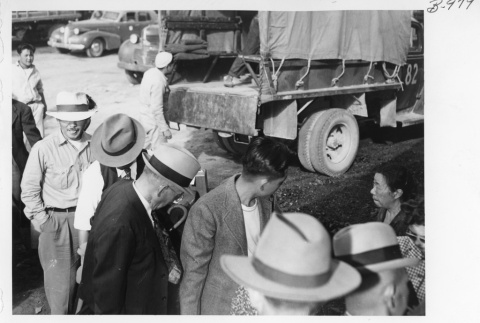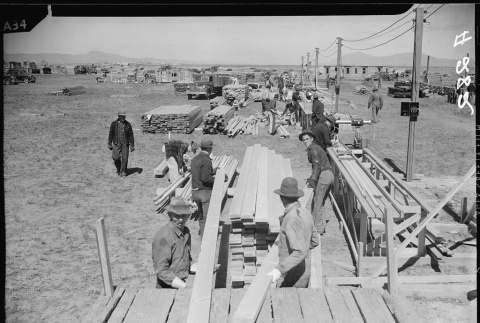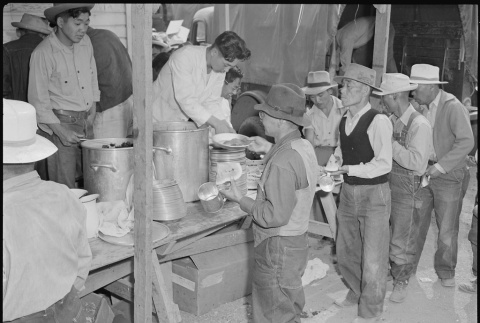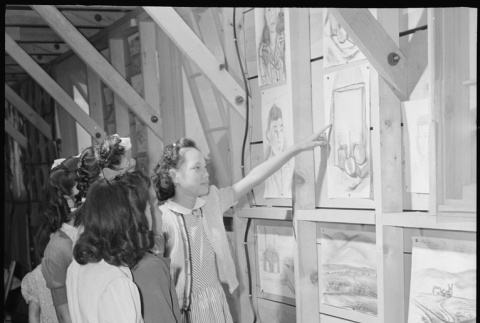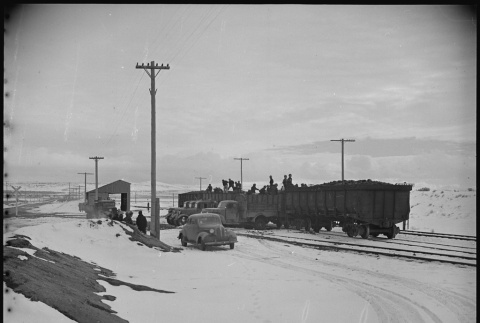140 items
140 items
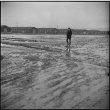
img
Muddy conditions (ddr-densho-37-350)
Original WRA caption: Tule Lake Relocation Center, Newell, California. Thaws turn the streets and firebreaks into seas of mud, and makes difficult motor transportation through the center.
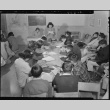
img
Camp classroom (ddr-densho-37-173)
Original WRA caption: Tule Lake Relocation Center, Newell, California. World History and English, a two hour class taught by Mrs. Hanny Billigmeier.

img
Japanese Americans fishing (ddr-densho-37-367)
Original WRA caption: Tule Lake Relocation Center, Newell, California. During the noon hour, evacuee farm workers fish for carp in a nearby slough.
![Subject: separation of evacuees of doubtful loyalty from loyal evacuees [policy memo by Dillon S. Myer] (ddr-csujad-19-1)](https://ddr.densho.org/media/cache/fa/90/fa90498bc48ba123cb6d62b7c610cc47.jpg)
doc
Subject: separation of evacuees of doubtful loyalty from loyal evacuees [policy memo by Dillon S. Myer] (ddr-csujad-19-1)
Details the War Relocation Authority's policy to remove to a separate facility "those persons of Japanese ancestry residing in relocation centers who by their acts have indicated that their loyalties lie with Japan during the present hostilities." Along with Policy, headings include Designation of Center for Evacuees of Doubtful Loyalty, referring to Tule Lake; Persons to …

img
Japanese Americans relocating to a different camp (ddr-densho-37-57)
Original WRA caption: Boy accompanying his parents to the Tule Lake Center looks out a window of the special train which carried 254 transferees from the Minidoka Relocation Center.
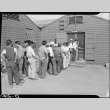
img
Japanese American workers waiting in line (ddr-densho-37-421)
Original WRA caption: Tule Lake Relocation Center, Newell, California. A line up of evacuee workers waiting for their identification tags which are to be used in conjunction with the first pay day at this War Relocation Authority Center.
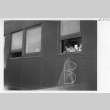
img
A boy looking out of a train window (ddr-fom-1-915)
WRA caption on reverse: "Boy accompanying his parents to the Tule Lake Center looks out a window of the special train which carried 254 transferees from the Minidoka Relocation Center."
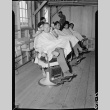
img
Barber shop (ddr-densho-37-384)
Original WRA caption: Tule Lake Relocation Center, Newell, California. Motimer Cooke, Supervisor of Community Enterprises, enjoys the first hair-cut given in the barber shop at this War Relocation Authority center. Frances Imura, evacuee from Sacramento is the barber.
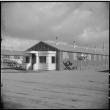
img
Row of barracks (ddr-densho-37-79)
Original WRA caption: Tule Lake Relocation Center, Newell, California. A view down one of the streets of the relocation center, showing the artistic way in which the evacuees decorate the exterior of their barracks to make them more homelike.
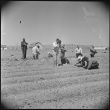
img
Newsreel and newspaper cameramen in camp (ddr-densho-37-355)
Original WRA caption: Newsreel cameramen and newspaper cameramen from the San Francisco newspapers photograph potatoe planting on the farm at the Tule Lake Relocation Center.
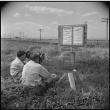
img
Camp boundary sign (ddr-densho-37-835)
Original caption: Tule Lake Relocation Center, Newell, California. (L to R) Frank Vail, newsreel cameraman for Pathe, and Joe Rucker, for Paramont, photograph boundry markers.
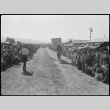
img
Labor Day parade (ddr-densho-37-375)
Original WRA caption: Tule Lake Relocation Center, Newell, California. A parade was held by evacuees to celebrate labor day. Great originality in costuming was shown.
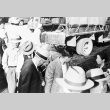
img
Japanese Americans transferring to a different camp (ddr-densho-37-64)
Original WRA caption: A group of 254 evacuees transferred from the Minidoka Relocation Center to the Tule Lake Center boards the train at Hunt siding after riding the five miles from the center in trucks.
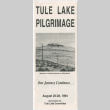
doc
Tule Lake Pilgrimage (ddr-densho-365-8)
This pamphlet briefly describes the circumstances leading to the creation of the Tule Lake Relocation and Segregation Center, and follows up with a statement concerning the importance of the Tule Lake Pilgrimage in the healing process for Japanese Americans. The right-hand fold out includes an itinerary for the 1994 Tule Lake Pilgrimage.
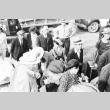
img
Japanese Americans relocating to a different camp (ddr-densho-37-63)
Original WRA caption: A group of the 254 evacuees transferred from the Minidoka relocation center to the Tule Lake center boards the train at Hunt siding after riding the five miles from the center in trucks.
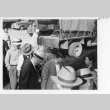
img
People being transferred to Tule Lake (ddr-fom-1-918)
WRA caption on reverse: "A group of the 254 evacuees transferred from the Minidoka Relocation Center to the Tule Lake Center boards the train at Hunt siding after riding the five miles from the center by truck."
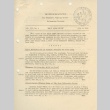
doc
Daily Press Review, Vol. III, No. 5 (ddr-densho-156-206)
Article titles: "Ralph Advocates Use of Japanese Evacuees for Farm Labor"; "Germans, Italians are Aided on Coast"; "Infant Formula Kitchen Opens at Tule Lake Relocation Center"; "Population of Tule Lake Relocation Project Now 7,570"; "Seek to Alleviate Farm Labor Shortage"; First Baby Born at Tule Lake Relocation Project"; "Japanese Farm Labor Sought by Klamath Falls Agricultural …
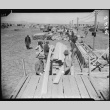
img
Camp construction (ddr-densho-37-248)
Original WRA caption: Construction begins on a War Relocation Authority center for evacuees of Japanese ancestry near Tule Lake in Modoc County, California, south of the Oregon border.

img
Camp farm workers having lunch (ddr-densho-37-368)
Original WRA caption: Tule Lake Relocation Center, Newell, California. A view in the lunch shed at the farm. Trucks from the kitchens bring hot lunches to the workers.

img
Camp construction (ddr-densho-37-249)
Original WRA caption: Construction begins on a War Relocation Authority center for evacuees of Japanese ancestry near Tule Lake in Modoc County, California, south of the Oregon border.
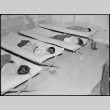
img
Sleeping nursery school children (ddr-densho-37-369)
Original WRA caption: Tule Lake Relocation Center, Newell, California. Nursery school children taking a midafternoon nap. Note the piles of shoes placed at the head of each bed.

doc
The Boom Town, Part III (1943) (ddr-densho-65-425)
Selected article titles: "The Tule Lake Project" (p. 2), "A Day in the Relocation Center" (p. 15), "Fleeting Impressions" (p. 25), "Athletics" (p. 29), "Chronology of Events" (p. 32).
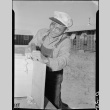
img
Japanese American carpenter building furniture (ddr-densho-37-358)
Original WRA caption: Tule Lake Relocation Center, Newell, California. Shinkichi Kiyono, 56, carpenter-evacuee from Longview, Washington, is shown using a carpenter's plane which he won as first prize in a furniture contest conducted among the evacuees of Japanese descent at this War Relocation Authority center.
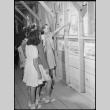
img
Camp art exhibit (ddr-densho-37-319)
Original WRA caption: Tule Lake Relocation Center, Newell, California. An evacuee girl proudly shows friends her art work which was on display in the exhibit shows held on labor day.
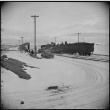
img
Japanese Americans unloading coal (ddr-densho-37-348)
Original WRA caption: Tule Lake Relocation Center, Newell, California. Evacuee workers unload coal at Staley Junction, which is the rail head for this center. This coal is used by the residents during the extreamely [sic] cold winters which northern California offers.
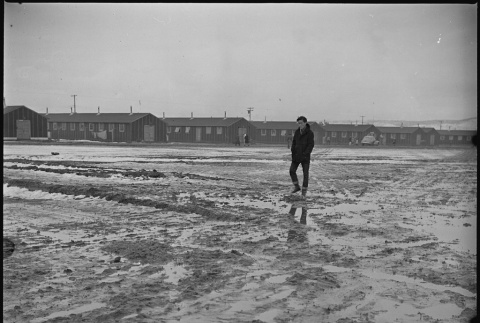
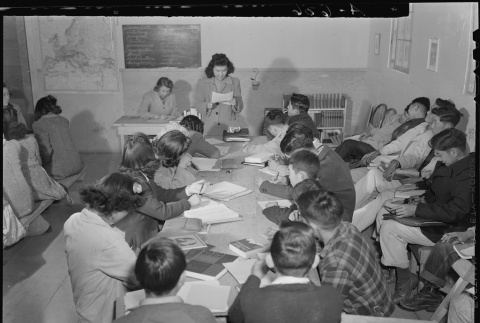
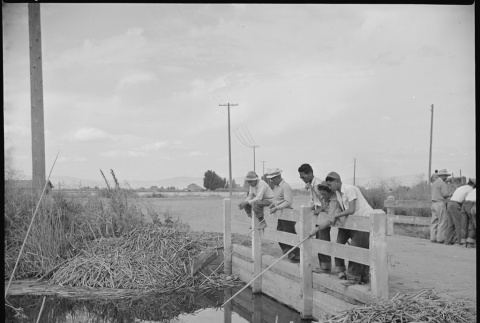
![Subject: separation of evacuees of doubtful loyalty from loyal evacuees [policy memo by Dillon S. Myer] (ddr-csujad-19-1)](https://ddr.densho.org/media/cache/92/ea/92ea8b71f3a3ec6df30b50666956f704.jpg)
